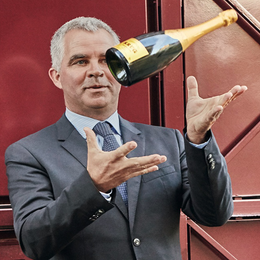Distillery Spotlight: Miyagikyo Distillery
Note: Our Distillery Spotlight articles discuss how each distillery's unique process results in the distinctive flavour profiles of their whisky. To find out more about each step of the whisky-making process, check out our Basics Series article on how to distil the elixir of life.

The adventures of Masataka Taketsuru and his wife Rita in founding Nikka Whisky as adapted into the hit TV-drama series, Massan (2014).

Flashback
On the last episode of WhiskyDex, we followed a Masataka Taketsuru, the son of Sake brewers, on his epic travels to far-flung Scotland to learn the art of whiskymaking.
He then fell in love, returned to Japan and settled down in Hokkaido to start an apple juice company, the Dai Nippon Kaju.
This would be a front that would support the distillery while he patiently waited for 10 years for his whiskies to perfectly mature.
Through war and shortages, Masataka held on to his faith, all for that perfect dram.
You can read all about Masataka’s journey in bringing Nikka Whisky and the Yoichi Distillery to life here!

The year is 1967, Masataka’s efforts have paid off and the Yoichi Distillery is fully up and running, producing his vision of great tasting Scotch-styled whisky. Whisky blends enjoy great popularity in Japan, for its smoothness, light, fragrant flavors that weaved in well with Highball cocktails that could be served in every occasion.
Masataka ever the perfectionist, wanted to take this further and had begun drawing up plans to create an even more complex blend through the use of a greater variety of whisky styles. This led him to explore Japan in search of environments contrasting to that of Yoichi’s.
This was a search that lasted three years.
Getting the Terroir Right
Whilst on the main island, it was in Sendai, Miyagi Prefecture, that Masataka came across a scenic mist-shrouded glen, nestled in the mountains, coveting the intersection of two rivers, the name of which was coincidentally Nikkawa River. At this location, the Nikkawa River neatly intersected with the Hirosegawa River.

Miyagikyo sits at the intersection of the Nikkawa River and the Hirosegawa River. Seems oddly familiar... (Image Source: Cool Hunting)
It is said that upon trying the soft water from the rivers, he was so impressed that he decided that the waters from the Nikkawa River would be the source for what would be known as the Sendai Distillery, later of course renamed the Miyagikyo Distillery in 2001 by its parent, Asahi.
Now if this all sounds familiar, you’re not dreaming, it is strangely similar to another well-known Japanese distillery whom we’ve certainly heard about before.
That said, not only were the waters pure, fresh and soft, but that the surrounding temperature was also well-balanced and temperate. With the terroir down, Masataka would take it further in differentiating this new distillery from that of Yoichi.
What makes Miyagikyo the Yin to Yoichi’s Yang?
Compared to Yoichi, Miyagikyo’s pot stills are much larger and was also of differing shapes, such as having a bulge neck and an ascending lyne-arm. In fact, Miyagikyo’s pot stills are amongst the largest used in Japan.
This deliberate design included a ring above the large belly that allows the distillate to reflux, producing a lighter, more floral and fruitier flavor.

The secret lies partially in the stills Miyagikyo uses.
Another interesting feature is the addition of a boil ball within the pot stills that helps to even out the heating of the distillate, preventing excessive bubbling that may hurt the delicateness of the distillate. This ensures a smoother and lighter whisky.
These pot stills were also heated indirectly using steam rather than direct coal-fired heating that we saw in Yoichi. This would allow the whiskies distilled at Miyagikyo to be more slowly and evenly distilled at a lower temperature, allowing for its whiskies to take on a much softer and floral profile.

(Image Source: Mizunara The Shop)
With a lighter and more floral, and fruitier profile, you’ll often find Miyagikyo’s whiskies to be matured in Sherry casks to give it a stronger, spicier edge, melding it with Sherry’s sweeter and deeper ripened fruity undertones, much like that of dates and stewed fruit.
A feat for the burgeoning Nikka, Miyagikyo would house eight pot stills dedicated to producing Miyagikyo’s own single malt.
Adding Some Grain To The Equation
But that’s not all, as the goal with the establishment of Miyagikyo Distillery was to help Nikka create more complex blends, Masataka would import one more thing he picked up whilst in Scotland – the use of Coffey stills to produce grain whisky.
Coffey stills are a very traditional type of continuous still, invented by one Mr. Aeneas Coffey in 1830. Masataka had become familiar with the use of these Coffey stills during his time in Scotland.

While the still’s set-up was fairly old-fashioned and inefficient, it was able to remain more flavors from the underlying grain. In Nikka’s case, this would be corn, earning Nikka grain whisky the title of “Japanese Bourbon”.
Masataka had concluded that the grain whisky produced using these stills would be of unparalleled quality necessary for Nikka’s blends.
As such, Masataka got to work, importing the first set over to Japan in 1963. Subsequently, a second Coffey still was brought over to Japan, teeing the total number to two.

These are still used today to produce grain whisky for Nikka and are even bottled separately under the labels Nikka Coffey Grain and Nikka Coffey Malt.
This was a huge upgrade for Nikka, with Miyagikyo alone bringing online an annual production of 3 million litres of whisky, even surpassing that of Yoichi. Though compared to the likes of Yamazaki and Hakushu, with 6 million and 4 million litres respectively, it was still significantly smaller.
Miyagikyo’s profile:
Colour:
- Deep Gold (Young)
- Mahogany (Older)
Nose:
- Perfumery and Aromatic Floral Notes (Iris, Lily, Lavender, Honeysuckle)
- Maltiness (Honeyed Oats, Greek Yoghurt, Toffee)
- Tropical and Stone Fruits (Peaches, Nectarines, Banana, Lychee, Melons)
- Light Bitterness (Liquorice, Camphor, Fennel, Pine)
- Light Ash (Burnt Wood Smoke, Light Sandalwood)
Palate:
- Firm, Light to Medium Bodied, Silky Smooth
- Spice (Cinnamon, Ginger, Nutmeg, Clove)
- Toasted Oak (Cedar, White Oak)
- Sweet (Milk Chocolates)
- Slight Bitterness (Liquorice, Tobacco Leaves)
- Citric (Oranges, Lemons)
- Hints of Nuttiness (Hazelnut, Almonds)
Finish:
- Long, Soft, Slightly Drying
- Floral Tannins (Dried Flowers, Black Tea)
- Citric, Tangy (Grapefruit)
- Spice (Tobacco, Cardamom, Ginger)
Our Take
We were somewhat fortunate that we had the opportunity to try some of Yoichi and Miyagikyo’s older whiskies before they went extinct or at least before we had to pay prices that would make our wallets extinct.

It is clear to anyone tasting Yoichi and Miyagikyo side by side, that Masataka has certainly succeeded in producing two whiskies that are truly night and day from each other.
Yoichi is bold, muscular, smokey and aggressive. Punching way above its weight, with very strong flavors of bittersweet cacao nibs, nutty and herbal notes, mix of sweet tropical fruits, juicy ripened melons and stone fruit, and of course sharper edges of chilli. Its body is thick, oily and rich.

Yet in total contrast, Miyagikyo is lighter bodied, much more delicate, with a highly aromatic perfumery nose that is floral and fruity. It is much sweeter and tangy with notes of tropical fruits, which is somewhat similar to Yoichi, but in Miyagikyo’s case it is much softer and rounder in palate. It is more drying and nuttier as well, with an overall malty ovaltine base that buoys the whisky.
For Yoichi’s sharper, more rugged smokey and herbaceous flavors, Miyagikyo is much more floral and delicate.

You can even try the combination of the two through Nikka’s Taketsuru blends, which we’re a huge fan of.
For those used to a much more traditional style of Islay whiskies, Yoichi would likely come close, while those who prefer something closer to the Campbeltown or Lowland styled whiskies, would likely prefer Miyagikyo.
Our Favorites
Entry: Nikka Miyagikyo NAS Single Malt; Miyagikyo Flavor Set (Sherry & Sweet, Malty & Soft, Fruity & Rich); Taketsuru Pure Malt 2020 Release
Intermediate: Miyagikyo 10 Year Old; Miyagikyo Apple Brand Wood Finish; Miyagikyo Rum Wood Finish
Top Shelf: Miyagikyo Sherry Wood Finish; Miyagikyo Manzanilla Wood Finish; Miyagikyo 15 Year Old

@111hotpot






